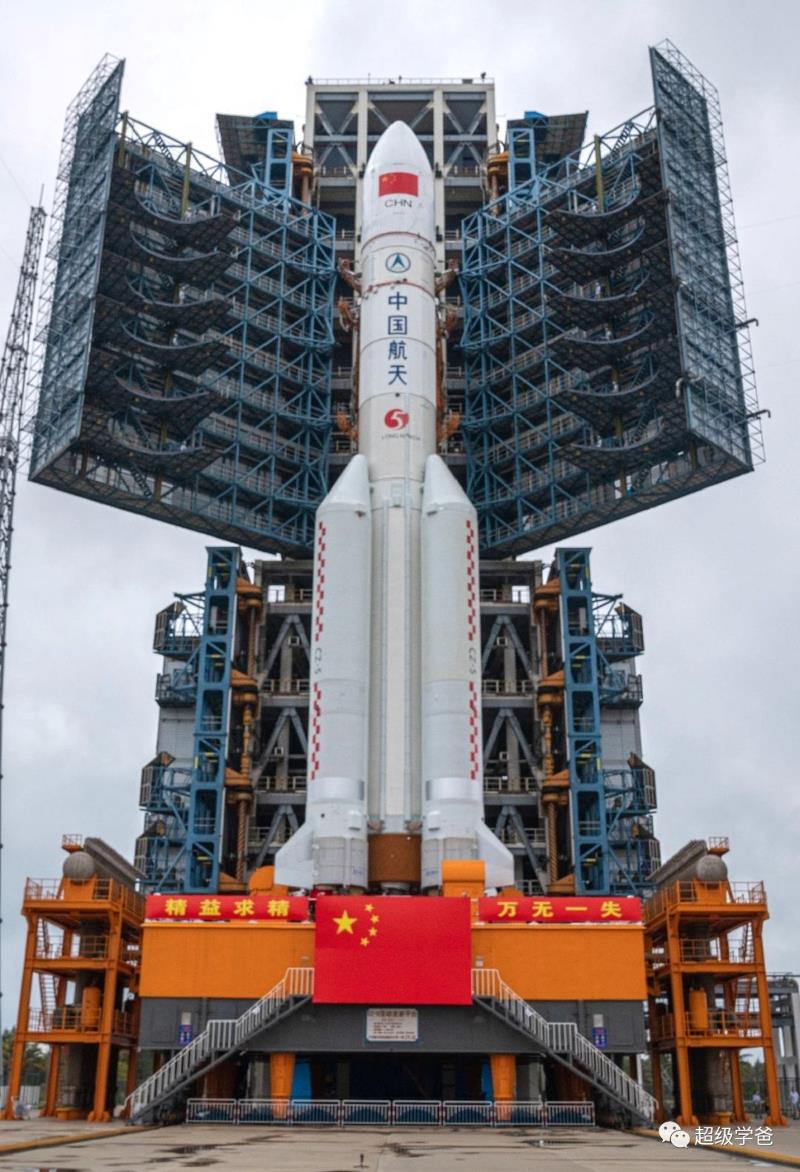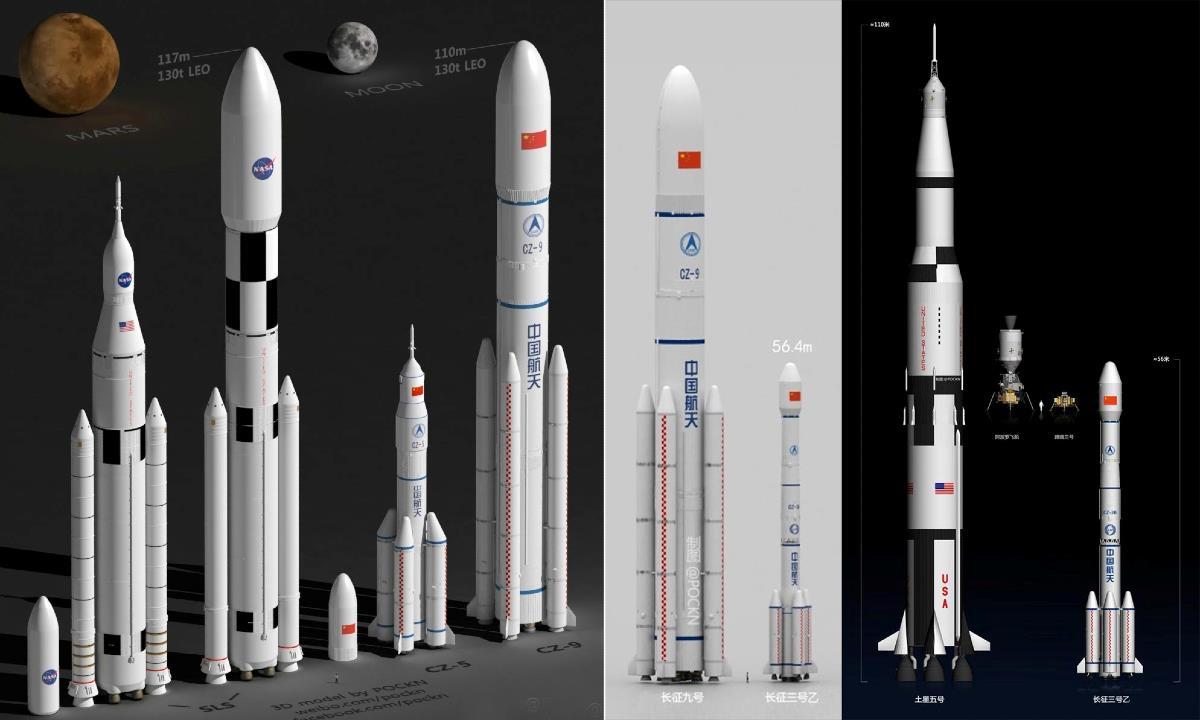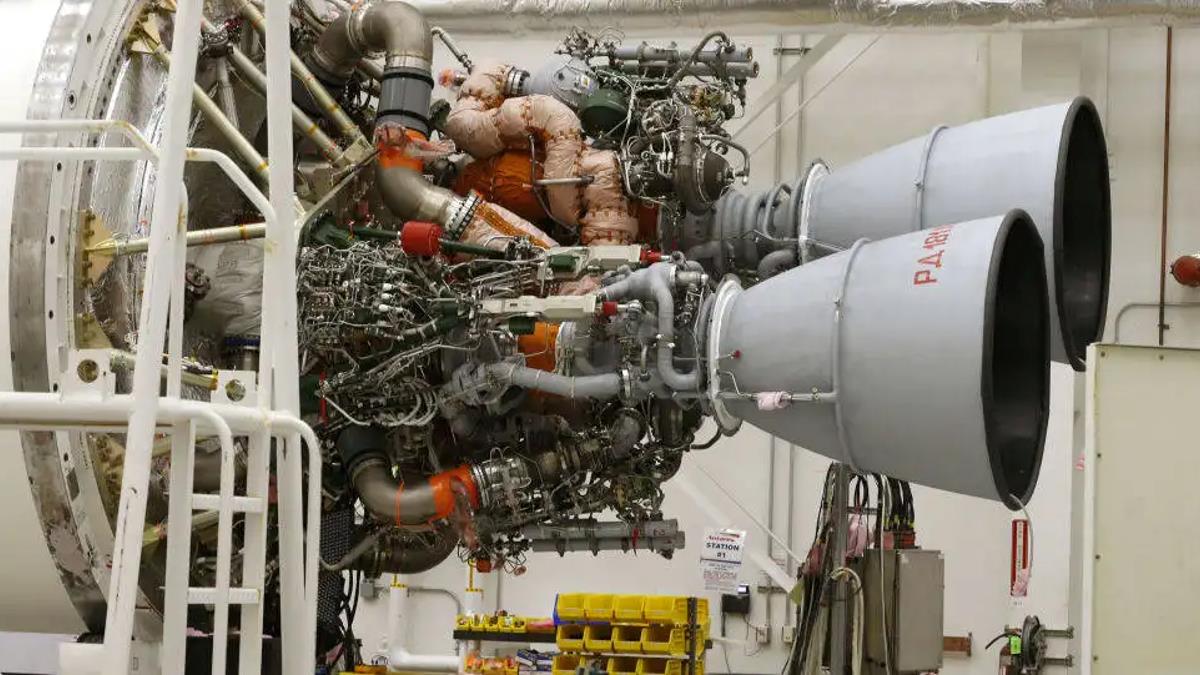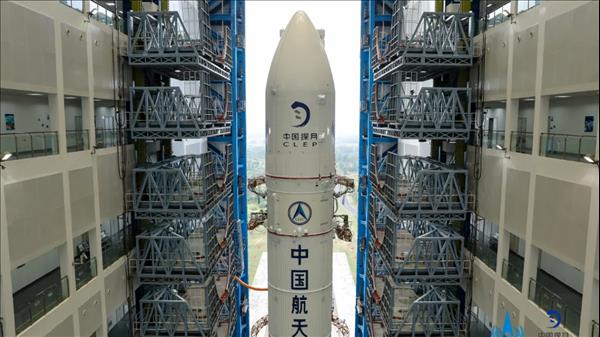
US-China In A Heated Tit-For-Tat Moon Race
China is planning to send astronauts to the moon by 2030 with its self-developed rocket that uses post-Soviet technologies it acquired from Ukraine.
On the heels of the ambitious target set by the US National Aeronautics and Space Administration (NASA) to send astronauts back to the moon by 2025 – following up the last NASA visit in 1972 – the China Aerospace Science and Technology Corp (CASC) has announced plans to match that mission by 2030.
The rocket designers at CASC, a state-owned contractor of China's space program, say one way to accomplish this is to use an updated version of the Long March 5 lunar landing rocket. The new version, known as CZ-5DY, would have 2.64 times the thrust of the Long March 5 used in China's last lunar mission to collect moon samples in December 2020, the designers say.
One prominent Chinese space columnist says China's space technology is indeed lagging behind the US, but over the past decade, the gap had been narrowed from half a century to just several years.
In 2018, China and the US entered not only a trade war but also a new heated space competition. In December 2018, China launched a robotic spacecraft known as Chang'e-4, which landed on the moon in January 2019. In late 2020, Chang'e-5, carried by a Long March 5 rocket, successfully brought lunar samples back to Earth.
An old engine from then-Soviet Union
Long March 5 is nicknamed 'Fat Five' but it may get even fatter in the future. Photo: Baidu.com
The Long March 5, or Changzheng 5, has a thrust of 1,060 tons to lift 25 tons to low Earth orbit and 8 tons to Earth-moon transfer orbit. It is nicknamed“Fat Five” as it looks bulky with eight YF-100 and two YF-77 engines.
According to Chinese media, the design of YF-100 originated from the RF-120, which was produced by KB Pivdenne in Ukraine several decades ago. When the Soviet Union collapsed in 1991, China bought two RF-120 and several RD-170 engines from the company.
Since 2000, China has reportedly continued to acquire from Ukraine low-cost former Soviet Union technologies, including jet engines , aircraft carriers and space rockets.
On December 21 last year, Chinese and Ukrainian officials in a virtual meeting approved dozens of science cooperation projects for 2022 and 2023.
While global media are paying considerable attention to this week's launch of NASA's Artemis 1 spacecraft, Chinese media are playing up China's 2030 planned moonshot.
Chinese articles have cited comments by CASC rocket designer Ma Ying who said on August 20:“A new generation rocket will be capable of sending Chinese people to the moon in around 2030. This heavy carrier rocket will be able to lift 50 tons to Earth-Moon transfer orbit to support the moon exploration activities.”
According to Ma, the CASC is also investing in technologies that will enable the re-use of booster rockets to reduce the costs of future space projects. He also said artificial intelligence (AI) technologies will be used to optimize the rockets' power.
Fast track to the moonSome media outlets have said China's first manned trip to the moon will be achieved with the Long March 9 rocket, which has a thrust of 5,000 tons to lift 140 tons into low Earth orbit and 50 tons to Earth-moon transfer orbit.
The Long March 9 is expected to have an initial test in 2028 or 2029 using China's new YF-135 engine, which has four times the thrust of the YF-100.

A comparison between Long March 9 and American space rockets Photo: CASC
The Science and Technology Daily, an official newspaper operated by China's Ministry of Science and Technology, on July 29 suggested another option if the Long March 9 isn't ready in time for a 2030 moon mission.
Citing an unnamed CASC source, the report said China would use a CZ-5DF rocket, which has a thrust of 2,800 tons to lift 70 tons to low Earth orbit and 27 tons to Earth-moon transfer orbit. It can carry a 25-ton space capsule with people to the moon.
Under that option, the rocket would have 21 YF-100 engines, compared with the“Fat Five” configuration of eight YF-100 engines and two smaller YF-77s.
Zhu Xiquan, a deputy chief designer at the CASC's 702 Research Institute, says in the report that this would be the biggest space mission in China's space development history.

Russia tries to sell its RD-180 engine technologies to China. Photo: Sohu.com
Apart from the YF-100, China could also seek to obtain advanced RF-180 engines from Russia, though negotiations on such a deal have been complicated, Chinese media say .
US space sanctionsUS sanctions could also hobble China's lunar ambitions.
The US Commerce Department's Bureau of Industry and Security (BIS) on August 24 sanctioned seven Chinese entities by adding them to its Entity List. Those sanctioned, including four CASC research institutes, were accused of supporting the Chinese military and threatening US national security.
BIS sanctioned other CASC research institutes earlier this year.
At the same time, America is reaching more assertively for space edge. In February 2019, then-US vice president Mike Pence, who chaired the US National Space Council, urged NASA to send American astronauts to the moon by 2024.
NASA then accelerated its Artemis program and planned to eventually build a lunar space station to be known as Gateway. On August 29, the unmanned Artemis 1 failed to launch due to technical and climate issues.
Chinese media, for its part, said it was premature for NASA to start its moon mission. Artemis 1 is set to attempt to launch again on September 3.
According to NASA's plan, Artemis 2 will take four astronauts, including the first woman and first person of color, around the moon's orbit and back in 2024. Artemis 3, supported by SpaceX's human landing system (HLS), is scheduled to send astronauts to land on the moon in 2025.
Read: China steals space race march with lab module launch
Follow Jeff Pao on Twitter at @jeffpao3

Legal Disclaimer:
MENAFN provides the
information “as is” without warranty of any kind. We do not accept
any responsibility or liability for the accuracy, content, images,
videos, licenses, completeness, legality, or reliability of the information
contained in this article. If you have any complaints or copyright
issues related to this article, kindly contact the provider above.
Most popular stories
Market Research

- Salvium Solves The Privacy Paradox: Salvium One Delivers Mica-Compliant Privacy That Exchanges Can List
- Cregis At TOKEN2049 Singapore 2025: Unlocking The Next Frontier Of Adoption
- Moonbirds And Azuki IP Coming To Verse8 As AI-Native Game Platform Integrates With Story
- CEA Industries ($BNC) Announces BNB Holdings Of 480,000 Tokens, And Total Crypto And Cash Holdings Of $663 Million
- SPAYZ.Io White Paper Explores Opportunities, Challenges And Ambitions In Payments Industry
- Solstice Announces Strategic Collaboration With Chainlink And Leading Custody And Venture Firms To Enhance Ecosystem Ahead Of USX Stablecoin Launch




















Comments
No comment